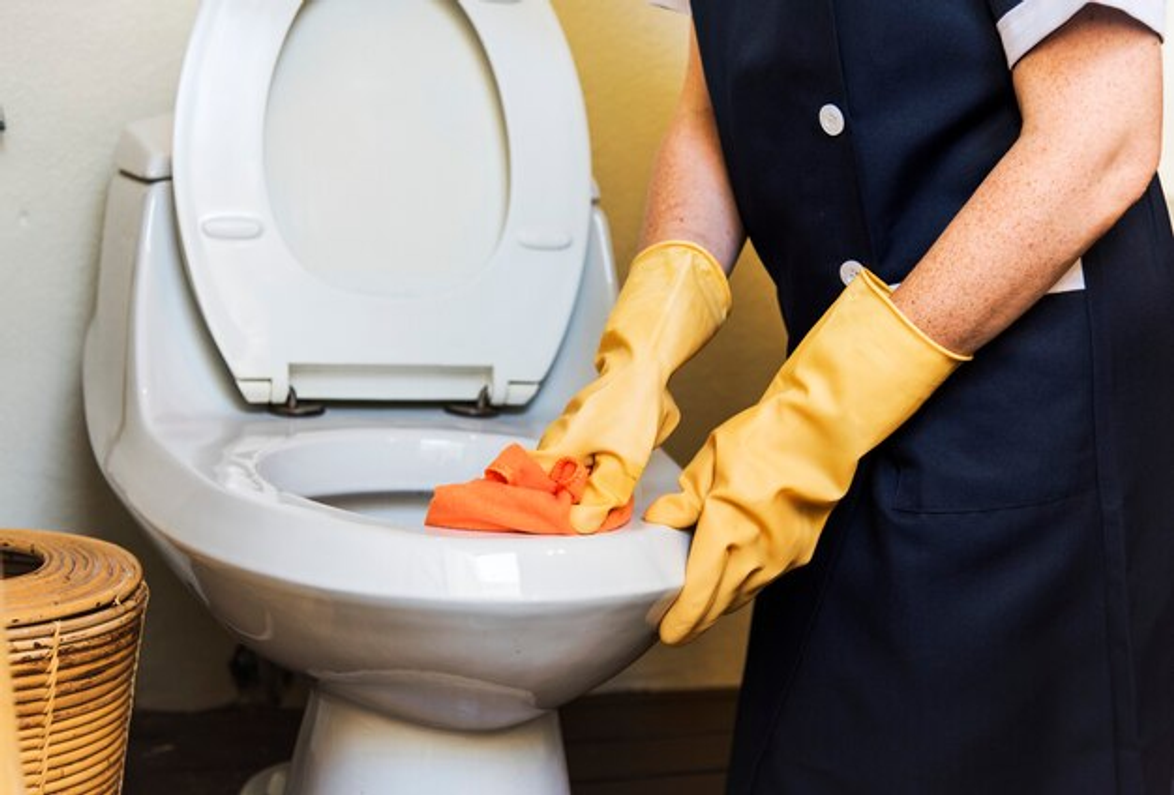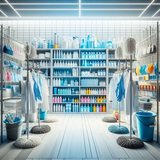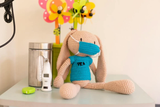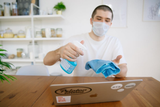Achieving Excellence in Public Bathroom Sanitization: A Comprehensive Guide
Maintaining impeccable hygiene in public restrooms is paramount for ensuring the safety and satisfaction of customers. Businesses that prioritize cleanliness often receive rave reviews from patrons. In this guide, we will delve into the meticulous process of professionally cleaning public bathrooms using disinfectant wipes.
‘Cleansing a public restroom is more than just removing dirt; it's an act of service, a commitment to creating a pristine haven where every individual can answer nature's call in absolute comfort.’
Let's immerse ourselves in the realm of hygiene and cleanliness.
I. Assessing the Environment
Before commencing the cleaning process of a public restroom, it is vital to conduct a pre-cleaning assessment. Identify high-traffic areas and pinpoint spots prone to germ and grim accumulation. This initial evaluation lays the foundation for a tailored cleaning strategy specific to the restroom's unique needs.
As part of this assessment, ensure an adequate supply of disinfectant wipes. Running out of supplies mid-cleaning can compromise overall hygiene.
II. Pre-Cleaning Preparation
1. Gather Essential Supplies
Begin by consolidating all necessary supplies within a cleaning cabinet. This includes disinfectant wipes, gloves, trash bags, and cleaning agents for various surfaces. Easy access streamlines the cleaning process.
2. Secure the Area
Display warning signs or barriers to indicate that the restroom is temporarily unavailable during cleaning. This not only enhances safety but also prevents disruptions while disinfecting.
III. Targeted Cleaning Techniques
1. Surface-by-Surface Approach
Adopt a systematic approach by cleaning one surface at a time, starting with high-touch areas like door handles, faucets, and light switches.
Disinfectant wipes are highly effective for eliminating germs from these frequently touched surfaces.
2. Addressing Fixtures and Fittings
Proceed to clean fixtures such as sinks, toilets, and urinals. Thoroughly wipe each surface, paying extra attention to crevices and corners where dirt tends to accumulate.
Disinfectant wipes serve as both cleaning and sanitizing agents, ensuring a hygienic environment.
3. Tackling Floors and Walls
Don't overlook floors and walls, as these are breeding grounds for bacteria. Use disinfectant wipes to scrub these surfaces, with a focus on areas around toilets and urinals. Proper disposal of used wipes in trash bags is essential for maintaining cleanliness.
|
Pro-Tip
Consider implementing touch-free solutions wherever possible, such as automatic soap dispensers, touchless faucets, and sensor-operated hand dryers. These technologies can minimize the spread of germs. |
IV. Adhering to Safety Protocols
1. Personal Protective Equipment (PPE)
When cleaning, wear disposable gloves to prevent contamination. Dispose of gloves after each cleaning session to maintain hygiene standards..
2. Ventilation
If possible, open doors and windows to facilitate ventilation in the restroom. This helps dissipate disinfectant odors and refreshes the air.
V. Efficiency through Time Management
1. Strategic Time Allocation
Effective time management is crucial for professional restroom cleaning. Allocate a specific amount of time to each section to prevent rushed cleaning and ensure thoroughness..
2. Optimal Wipe Usage
Use disinfectant wipes efficiently by using a new wipe for each surface. This not only streamlines the cleaning process, but assures proper disinfection of these surfaces (such as gym restroom sinks, showers, cabinets).
VI. Addressing Challenges
1. Stubborn Stains and Residue
Stubborn stains or residue are common in public restrooms. In such cases, consider using specialized cleaning agents designed for specific areas. Always follow product guidelines and safety measures to prevent surface damage or user injuries.
2. Dealing with High Traffic
Restrooms with high foot traffic require more frequent cleaning. Develop a cleaning schedule that aligns with peak usage times to ensure consistent cleanliness throughout the day. Regular cleaning prevents the buildup of dirt and germs, leaving a positive impression on customers.
VII. Communication is Key
1. Staff Training
Properly train cleaning staff in the disinfection process using disinfectant wipes and other cleaning protocols. Regular training equips employees with the knowledge and expertise to maintain superior hygiene standards.
2. Customer Awareness
Inform patrons about your commitment to cleanliness. Display signs or notices detailing the cleaning schedule, reassuring people that their health and safety are a top priority. This transparency builds trust and fosters loyalty.
VIII. Post-Cleaning Evaluation
1. Quality Check
After cleaning, conduct a quality check to ensure no residue from the wipes remains on surfaces. Address any areas that require further attention.
2. Restocking Supplies
Restock your cleaning caddy with fresh supplies after each cleaning session. This proactive measure ensures you are ready for future cleanups without interruptions.
IX. Environmental Responsibility
1. Eco-Friendly Alternatives
Incorporate environmentally friendly cleaning wipes into your routine. These germ-free wipes, while effective at killing pathogens, also support sustainability efforts. Modern businesses are increasingly environmentally conscious, and patrons appreciate such practices.
2. Waste Disposal Best Practices
Properly dispose of used disinfectant wipes in the trash.. Responsible waste management contributes to a healthier and safer environment.
X. Documenting Cleaning Procedures
1. Standard Operating Procedures (SOPs)
Create detailed SOPs for restroom cleaning. These procedures document the cleaning process for those involved and standardize how it's done. Regularly update SOPs to align with industry standards and innovations.
2. Periodic Audits
Regularly review your cleaning process and document any changes. Seek input from cleaning personnel and customers on areas that can be improved. This proactive approach underscores your commitment to continuous quality improvement in maintaining a clean environment.
Conclusion:
Mastering the art of professional bathroom sanitization requires efficiency, attention to detail, and a dedication to improvement. Through meticulous time management, a proactive problem-solving approach, open communication, environmental consciousness, and comprehensive record-keeping of cleaning activities, your establishment can elevate its cleanliness standards. Remember that cleaning is not just a task; it's an ongoing pursuit of perfection in hygiene and customer satisfaction. Follow these guidelines, and your public restroom will exemplify professional hygiene.
Recent Posts
-
Mastering Hospital Hygiene: A Comprehensive Guide to Effectively Clean Hospital Rooms
In the realm of healthcare, maintaining a pristine environment is paramount. Nowhere is this more …6th Apr 2024 -
How to Disinfect Kids Toys: A Guide for Parents
In today's world, maintaining a high level of hygiene is more crucial than ever, especially for o …6th Apr 2024 -
Mastering Hygiene: Safely Cleaning Your Laptop Screen and Keyboard
In today's fast-paced digital age, laptops have become indispensable tools, streamlining work and …6th Apr 2024




